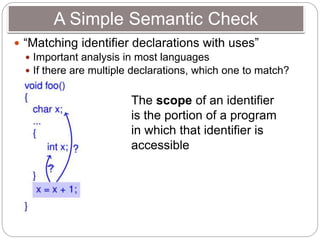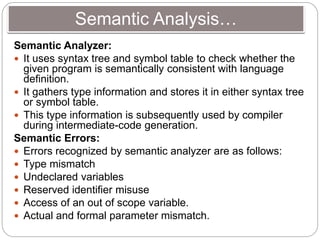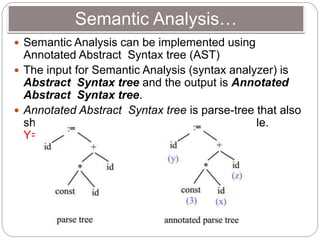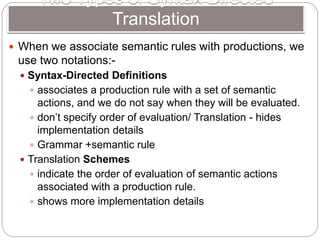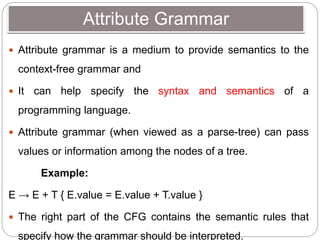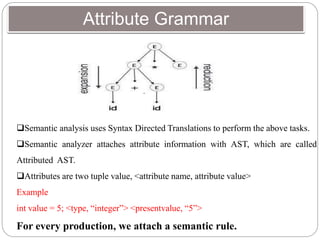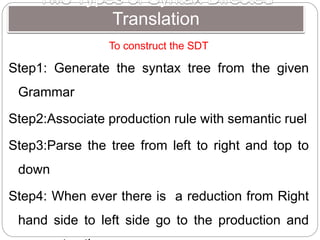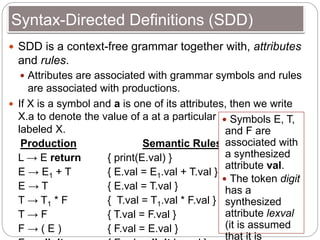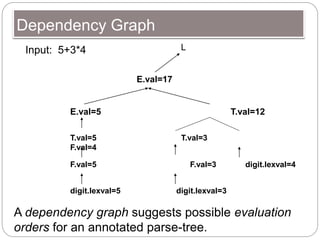The document discusses semantic analysis in compiler design. It begins by introducing semantic analysis and its goals of ensuring a program has well-defined meaning and checking properties that aren't caught in earlier parsing phases, like variable declarations and type consistency. It then discusses implementing semantic analysis using an annotated abstract syntax tree and syntax-directed definitions. These attach attributes and semantic rules to symbols and productions in a context-free grammar. The document provides examples of simple semantic rules and building an attributed parse tree. It also discusses different types of attributes and syntax-directed translation schemes. Finally, it covers type checking as a key part of semantic analysis.
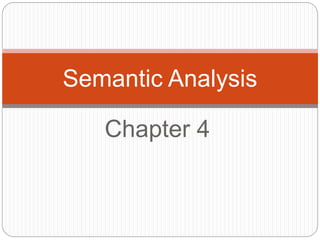
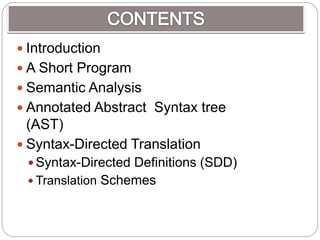


![A Short Program
class MyClass implements MyInterface {
string myInteger;
void doSomething() {
int[] x = new string;
x[5] = myInteger * y;
}
void doSomething() {
}
int fibonacci(int n) {
return doSomething() + fibonacci(n – 1);
}
}](https://image.slidesharecdn.com/chapter4semanticanalysis-230506202152-cf2d26ab/85/Chapter-_4_Semantic-Analysis-pptx-5-320.jpg)
![A Short Program…
class MyClass implements MyInterface {
string myInteger;
void doSomething() {
int[] x = new string;
x[5] = myInteger * y;
}
void doSomething() {
}
int fibonacci(int n) {
return doSomething() + fibonacci(n – 1);
}
}](https://image.slidesharecdn.com/chapter4semanticanalysis-230506202152-cf2d26ab/85/Chapter-_4_Semantic-Analysis-pptx-6-320.jpg)

